Senegal
Culture Name
Senegalese
Orientation
Identification. The area that today is Senegal once was part of the West African Empire of Mali, Ghana, and Tekrur. The country takes its name from the river that runs along its northern and eastern borders, forming the frontier with Mauritania and Mali. A poetic etymology from the Wolof people states that the name derives from the local term Sunugal, meaning "our dugout canoe" (everyone is in the same boat). The Republic of Senegal became independent in 1960 after three centuries of French colonial rule. Dakar, the capital since independence in 1960, lies on the Cap Vert peninsula, the most westerly point in Africa. Before independence, Dakar was the capital of French West Africa (AOF, or l'Afrique Occidentale Francçaise ), which included nine French-speaking West African states.
Although predominantly Muslim, Senegal is a tolerant secular state, whose peoples have lived together peacefully for several generations and have intermingled to some extent. Islam is a potential unifying factor. Wolof is the national language. The spread of education and increased economic opportunity have modified a traditional social structure based on kinship, but the majority of the people adhere to the traditional values of Kersa (respect for others) and Tegin (good manners). Terranga (hospitality) is a common word used by almost all of the country's twelve ethnic groups.
This sense of a national identity is not shared by the Diola populations in the forest areas of the Casamance, who since December 1982 have been engaged in an armed insurgency to separate from the Islamized northerners. The first president, Léopold Sédar Senghor, a Roman Catholic who presided over the nation for over twenty years, was a fervent advocate of African unity.
Location and Geography. Senegal, situated on the western tip of Africa, covers an area of 76,000 square miles (196,781 square kilometers). It is bordered on the north by Mauritania, on the east by Mali, on the south by Guinea and Guinea-Bissau, and on the west by the Atlantic Ocean. The long, narrow Republic of the Gambia is approximately two hundred miles long, surrounded by Senegal's southern region. Agriculture is based largely on the cultivation of peanuts, millet, and sorghum. Like most Sahelian countries, Senegal has an important livestock sector that periodically is decimated by drought. Niokolo Koba National Park is situated in the southeast and is one of the most important reserves for large mammals in West Africa.
Demography. The population of approximately ten million includes indigenous peoples, and a non-African population that is mostly French and Lebanese. There are heavy population concentrations in the urban centers (Dakar, Thie`s, Kaolack, Saint-Louis, Ziguinchor) because of rapid growth of the population and deteriorating environmental conditions that have made it difficult for people to live off the land.
Linguistic Affiliation. The population is divided into twelve ethnic groups, each with its own customs and dialect. The largest single ethnic group is the Wolof, who makes up over one-third of the population. Although French is the official language, it is spoken only by an educated minority, and Wolof has become a lingua franca towns and markets, schools, and interethnic marriages.
Symbolism. Animals, songs, flags, and colors have served as national symbols since before independence. The national flag has bands of green, yellow, and red. A green five-pointed star appears in the center of the yellow band. The color green symbolizes the forest and hope. Yellow stands for the savanna, and red for the blood spilled in the fight for liberty. In preparation for Independence Day, there
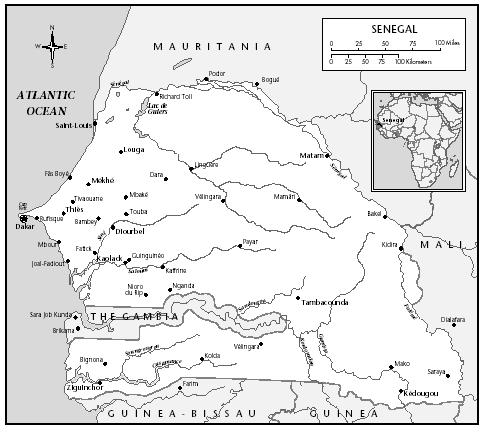
History and Ethnic Relations
Emergence of the Nation. Paleolithic and Neolithic wall paintings, tools, and pottery have been found in the Senegal River valley. After the tenth century, the people of Senegal were in constant contact with North Africa. Arab and Berber caravans came regularly to trade and arrived periodically as invaders looking for territories to conquer and convert to Islam. In the forteenth century, the Wolof empire, which extended from the Senegal River to the Gambia River, included six states: Baol, Walo, Cayor, Sine, Djolof, and Saloum. In 1444, the Portuguese turned the island of Gorée into a graveyard for sailors and established a profitable trade in slaves and gold along the coast of Senegal. Gradually, other European merchants followed, including the French, who established their first settlements in 1638 in the Senegal River, on the island of Saint-Louis, which became the base of all French activity and expansion in West Africa.
In 1840, the French government declared Senegal a permanent French possession, abolished all forms of slavery, and granted full citizenship to those born in Senegal. This enabled the people of Senegal to elect and send a deputy to the National Assembly in Paris. In 1854, General Louis Faidherbe, a colonial administrator, was given the assignment of pacifying the continuously battling kingdoms along the Senegal River. He created the Tirailleurs Senegalais (corps of Senegalese riflemen), an army of local volunteers under French commanders who achieved international fame during World War II. By 1902, the French government, which had embarked on a "Grand Design" to conquer as much territory as possible, had completed the conquest of most of the parts of West Africa not occupied by the British, the Portuguese, and the Germans, and Dakar was designated the capital of all French West African territories. The development of state schools provided education for Africans, and scholarships gave them the opportunity to receive higher learning in France, creating an educated African elite.
After World War II, France's relations with some of its territories were marked by major colonial wars, a crisis that resulted in the acceleration of the decolonization process in West Africa. In 1959, Senegal and the French Sudan decided to merge and form the independent Mali Federation, but it was not a success. Both countries then declared individual independence. On April 1960, Senegal was proclaimed an independent nation. The country's governing political party is the Senegalese Progressive Union (Union Progressiste Sénégalaise, or UPS), which was founded in 1949 and led by Léopold Sédar Senghor.
National Identity. Senegal is a land of traditions, and its people, although heterogenous, share a strong sense of national identity deeply rooted in Thiossane, a word used by the Wolof as well as the Serer (Fulani), that means "history, tradition, and culture." Since the World Festival of Negro Arts was organized at Dakar in 1966, institutions have been created or reoriented toward African traditions, including the Fundamental Institute of Black Africa; the Houses of Youth and Culture; the craft village of Soumbedioune in Dakar, which has become a center for Senegalese sculpture and goldsmithing; the Dynamique Museum; the Daniel Sorano Theater; and the tapestry factory of Thie`s. Although French is the official language and the main language of instruction in the schools, even the most educated people are far from being "black Frenchmen" culturally. The Dakar Wolof dialect has become the national language, especially in the urban areas and among the youth. The nation's precolonial traditions and long colonial history have helped forge a strong sense of national identity among the majority of the people, particularly the populations north of the Gambia River, who share similar hierarchical social structures and Islamic traditions and adherence to Muslim brotherhoods.
Ethnic Relations. The largest single ethnic group is the Wolof (43 percent of the population), followed by the Pular (also called Peulh or Fulani, nearly 25 percent, and the Serer (more than 15 percent). Smaller groups include the Diola, Mandink, and Soninke. Despite this cultural heterogeneity, interethnic strife does not exist and generally no group seeks autonomy on ethnic grounds or political independence except in the Casamance region. Since the early 1980s, the Casamance has seen the development of a separatist movement, and since 1990, there has been conflict between local guerrillas and the army. Casamance is substantially less Islamic and less Wolof than the rest of the country.
The presence of Europeans, mostly French (usually called Toubabs by the Senegalese) and Lebanese (each accounting for 1 percent of the population) has not caused serious friction or hostility. The country was tolerant of non-Senegalese Africans who came to live and work until the 1989 outbreak of violence Mauritania over grazing disputes curtailed their immigration.
The Wolof have preserved their ethnic identity as a result of their openness to other groups and people. For centuries they have lived side by side with the Serer, Tukulor, Fulani, Mandink, and Diolas and have traded and intermarried with these neighbors. Although they have fought neighbors in the past, today the relationship is one of tolerance and mutual jokes, which are known among the Wolof and the Fulani as Kal. The Wolof accept any person who easily identifies with others' customs.
Urbanism, Architecture, and the Use of Space
Lebou fishing people who settled in Dakar in the eighteenth century were looking for a safe haven. They founded their new site in 1795 and called it Ndakarou. Dakar occupies the southern end of the Cap Vert peninsula. On a plateau about hundred feet above the sea, the administrative structures left from the colonial era include the Presidential Palace, City Hall, the Chamber of Commerce with its yellow bricks, and the Court House, which was built in 1906. The tall modern buildings, handsome residences,
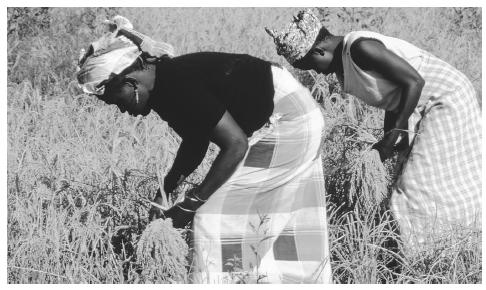
In rural areas, dwellings differ in type and in the materials used for construction but are adapted to the climate and the village way of life. Important activities and social occasions are shared on the pencha, where people gather to chat and discuss village matters.
Food and Economy
Food in Daily Life. The basic food is rice cooked with a spicy sauce and vegetables. The national dish is chep-bu-jen, the Wolof word for rice with fish. Cooked in a tomato sauce with boiled fish and a few vegetables (carrots, cabbage, and green peppers), chep-bu-jen is originally from the city of Saint-Louis. Yassa, a dish from Casamance is chicken or fish marinated in lemon juice, pepper, and onions and then baked. It is accompanied by plain white rice. Other sauces include mafé, domada and soupe kandja, (which is made from okra with fish and palm oil).
Food Customs at Ceremonial Occasions. On ceremonial occasions, festive meals that include roasted or grilled meat with beans or French fries are eaten. Couscous (steamed millet) with vegetables, mutton, and gravy is a ceremonial dish. At the end of each meal, strong and sweet tea is drunk. Except in areas where it is prohibited, alcohol is available.
Basic Economy. The country's market economy is based largely on agriculture. The limited economic growth it has achieved since independence is interrupted periodically by drought conditions that can send the economy into severe recession. The most important food crops are millet and sorghum; large quantities of rice are imported. Cotton, rice, sugar, and market-garden produce are grown. The national currency is called the CFA franc.
Land Tenure and Property. Primarily small family farms are worked chiefly by family labor. More than two-thirds of the country's farms are less than ten acres in size; only 5 percent are more than twenty-five acres. After independence, the National Land Tenure Law of 1964 gave the state rights over all rural land and in theory abolished rents paid to absentee landlords. Under this arrangement, the state would become the steward of the land and allocate land rights to those who worked it. Before independence, traditional local systems of land tenure were based on African customary law, which allowed the local nobility or the head or chief of a village to receive crop shares and land rents from former slaves and people without land. Under the new law, which was part of a package of socialist reforms, owners with permanent buildings on their land were given six months to establish deeds for their plots. All land was divided into four categories: urban areas, reserves (including national forests and parks), farmland, and "pioneer zones." The law permitted the government to declare some of the less intensively occupied pioneer zones and cede them to groups and organizations that were willing to develop them. The country's most prominent Muslim leaders own large estates in the pioneer zones. The government's decision in 1991 to transfer large tracts of protected forestland to the head of the Mouride brotherhood to be used by his followers for planting peanuts dealt a serious blow to the credibility of the land tenure policy. In a few weeks, thousands of Mouride followers talibés had cleared the land, a process accompanied by the eviction of six thousand pastoralists and one hundred thousand animals from the forest area. The press and the international donor community sharply criticized the government's decision, which followed a pattern dating back to colonial days, when the French ceded large tracts of land to the Mourides to encourage peanut production.
Other reforms included the establishment of farmers' cooperatives and rural councils to replace traditional kin and patron-client networks. The cooperatives became the basic sources from which farmers could obtain seeds, tools, credit, and marketing facilities for their crops.
Commercial Activities. Agricultural and manufactured products are sold, including foodstuffs and household goods. The informal sector provides inexpensive goods and services for the urban poor who cannot afford to buy the goods produced by the formal industrial sector. There is an enormous market for cheap used clothing, which often is smuggled into the country and permits families to clothe their children at a relatively low cost.
Major Industries. Industrial output is determined largely by agricultural performance. Most major manufacturing is located in and around Dakar. Food processing is the largest activity, accounting for 43 percent of industrial production. Groundnut extraction is the major agricultural industry. Other industrial production includes fishing, phosphate mining, chemicals and oil, metal and mechanical industries, and the construction material and paper industries. In terms of light industry, the craft sector is very active. It includes handmade textiles; gold, silver, and iron smithing; pottery making; woodworking; basketry; leatherworking; and other traditional crafts.
Trade. Peanuts, phosphates, cotton, and fish and fishing products are exported. Fishing products, mostly canned tuna, provide direct and indirect employment for more than 150,000 people. As part of its diversification policy, Senegal became one of the first African countries to develop tourism as a major national economic activity. However, tourism suffered a major blow from the Casamance insurgency and the conflict with Mauritania. Cash crops include rice, cowpeas, maize, sugar, and livestock. Cement, refined sugar, fertilizers, and tobacco products are exported to neighboring countries. Food, capital goods, and petroleum are imported from France, Cote d'Ivoire, Nigeria, Algeria, China, and Japan.
Division of Labor. In the past, division of labor was practiced in farming. Before the rainy season, young men did the hard work of clearing the bush and preparing the land for sowing. Once it rained and the seeds began to sprout, women and children weeded. The constitution bans child labor, but instead of attending school, many children work in the family's fields.
Social Stratification
Classes and Castes. The society historically was organized into a hierarchy of castes, a rigid structure in which descendants of royal lines and nobles ruled over artisan castes and slaves. After independence, a new set of status criteria emerged. New means for achieving wealth, power, and status were introduced through the market economy and the development of the educational system. The modern elite includes successful businessmen, managers and professionals in the private sector as well as influential politicians, and highly educated individuals. The deterioration of living conditions has affected the life of the masses. Lepers, polio victims, and beggars are a common sight in the cities.
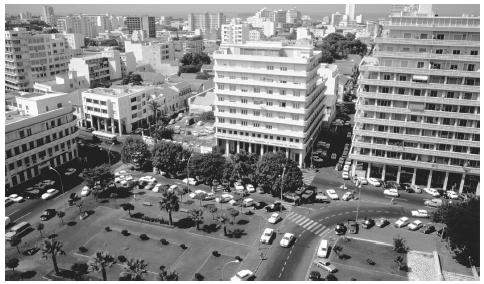
Symbols of Social Stratification. During the colonial era, nearly all the profits generated by the largest firms went to foreigners and the local nobility. The nationalization programs led by the government after independence favored a small number of citizens who entered into a new competition for status and power. The clans included successful businessmen, highly educated or politically well-connected individuals who were able to afford European-style living standards, including cars, modern appliances, luxurious villas or apartments, good schools, higher education for their children, and travel abroad. Investments in real estate, commerce, and agriculture were signs of achievement. In the rural hinterlands of the Cap Vert region, city dwellers own as much as 70 percent of the land. Jardiniers du Dimanche , or ("Sunday farmers") have invested in truck farms, orchards, and cattle-fattening operations, using loans from state-run banks. Corruption has contributed to the growing gap between the elite and the masses who are struggling to survive.
Political Life
Government. Senegal is a moderately decentralized republic dominated by a strong presidency. The president is elected by popular vote for a seven-year term and appoints a prime minister. The 1963 constitution provides for a civilian government composed of a dominant executive branch, a National Assembly, and an independent judiciary. A second legislative chamber, the Senate, was established in 1999.
Leadership and Political Officials. Called the "Poet President," Senghor was elected in 1960. As a student during the Depression years in Paris, he wrote poetry that helped launch the concept of Négritude. Inspired by the romantic vision of Africa of Harlem Renaissance authors and European ethnographers, Senghor exalted African culture. During his reign, the arts were well funded; he organized the Festival of Negro Arts in Dakar in 1966. His contribution to the founding of the Organization of African Unity (OAU) and Senegal and Gambia River Basin development associations won him respect as an elder statesman. Although a practicing Roman Catholic, Senghor developed strong ties with the Muslim brotherhoods, who supported him. Some Senegalese respected and revered him as the "Father of the Nation" even though they did not share his political views.
Senghor's political legacy was mixed. He provided the nation with a level of peace, political stability, tolerance, and freedom of expression that was rare in Africa. Unlike most African leaders, he knew when and how to give up power. However, by establishing a de facto one-party system, he contributed to the decline of his party's dynamism and thwarted the development of an opposition that could openly challenge national policies that had failed to stem economic decline.
President Abdou Diouf, who held office from 1981 to 2000, was a handpicked successor who peacefully stepped down after two decades in power. In a presidential election held in the year 2000, the forty-year dominance of the Socialist Party and Diouf's nineteen-year reign ended. In a second round of elections, he was defeated by Abdoulaye Wade, the leader of the main opposition party, the Senegalese Democratic Party.
Social Problems and Control. In the 1980s, Senegal, which had been largely free of ethnic, racial, and religious strife, began to experience those problems. Anti-Moor rioting and the mass exodus of Moors in 1989, the insurrection of separatist rebels, the fundamentalist Islamists who have emerged to challenge the brotherhoods' religious authority and the legitimacy of the secular state, and students' unrest and frustration at the lack of employment opportunities after graduation are signs of a more turbulent and less tolerant society. Theft occurs frequently, and most of the time people beat the criminal before the police arrive; on many occasions, vigilante groups and mobs have tried to lynch suspected thieves. Civilians have no access to guns, which are used mostly by the military and the police. In urban areas, alcoholism and drug use (mostly cannabis) have become a major issue.
Military Activity. The army has demonstrated a firm commitment to civilian rule and loyalty to the regime in power. Diouf continued Senghor's policy of building up the army and using it as an instrument of foreign policy. The army was used to put down the insurgency in the Casamance and ensure peace and order on the borders with Mauritania and Guinea-Bissau in the late 1980s and early 1990s. The military forces number about fifteen thousand and are among the best trained in Africa.
Social Welfare and Change Programs
Poor economic management has led to the intervention of the International Monetary Fund and the World Bank in State programs and policies. Two decades of structural adjustment programs have reduced government spending in all public sector activities, including social services. Urban and rural dwellers have adopted creative survival strategies, that have helped them cope with difficult times.
Nongovernmental Organizations and Other Associations
In difficult economic times, individuals and communities increasingly rely on social ties to create solidarity networks. These ties include family, friends, ethnic groups, neighborhood associations, religious brotherhoods, and hometown networks. Nongovernmental organizations such as UNICEF, the Red Cross Society of Senegal, Medecins sans Frontie`res, CARE, the Ford Foundation, and the Peace Corps help these networks in their initiatives. Village-based parent student associations have played an important role in financing school construction and providing school supplies and materials in rural areas. Village health committees have been organized to build maternity and village health centers and manage the distribution of medicines. In the countryside, farmers have launched their own irrigated agricultural projects. Nongovernmental organizations have helped finance these small-scale development activities.
Gender Roles and Statuses
Division of Labor by Gender. Women generally do most of the household chores of cooking, cleaning, and child rearing. With the growing exodus of young men from the villages, rural women have become increasingly involved in managing village forestry resources and operating millet and rice mills. The government has established a rural development agency designed to organize village women and involve them more actively in the development process. Women play a prominent role in village health committees and prenatal and postnatal programs. In urban areas, despite women's second-class status within Islam, change has proceeded rapidly in big cities, where women have entered the labor market as secretaries, typists, salesclerks, maids, and unskilled workers in textile mills and tuna-canning factories.
The Relative Status of Women and Men. The position of women in most ethnic groups is one of dependence: husbands, fathers, brothers, and uncles all have rights over women and much of what they produce. Despite constitutional protections, women face extensive societal discrimination, especially in rural areas, where Islamic and traditional customs, including polygyny and Islamic rules of inheritance, are strong and women generally are confined
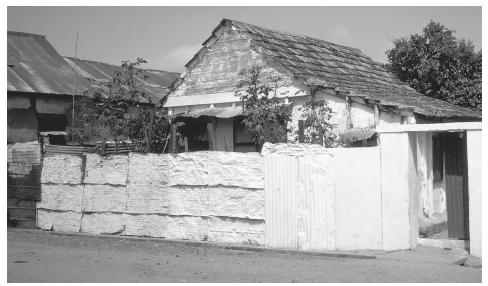
Marriage, Family, and Kinship
Marriage. In rural areas, parents often arrange marriages for their children. A young man may want a young woman, but his father decides whether she is suitable. A go-between often is appointed to investigate the woman's family background. If the father finds the family satisfactory, he sends the go-between to deliver kola nuts to the woman's parents. The parents accept the kola nuts if they approve of the young man. In matrilineal ethnic groups such as the Wolof, the mother's brother is sent on behalf of the groom to ask for the bride's hand. Along with kola nuts, money is given. Gifts such as a television set, a sewing machine, jewelry, and fashionable clothes are required from the groom. In Muslim families, most marriages are conducted at the mosque by the iman, or religious leader. Then a civil marriage takes place at city hall or the family court.
The bride moves to the groom's house with great ceremony in which relatives and friends participate. In rural areas, young women sing ribald songs to provoke and entertain. Usually many days of festivities follow.
Domestic Unit. The core of a domestic group or compound is a nuclear polygynous or family. After marriage, a man brings his wife to his father's compound, but such residence is not necessarily permanent. In any domestic group, other people often live with the family, sometimes permanently and sometimes temporarily. Often these are kin such as the male head's unmarried or divorced sister, a sister's child, or a wife's child by a divorced spouse.
Inheritance. The debts of the deceased are paid before the estate is distributed among the heirs. If all the deceased's children are minors, his brother acts as trustee for the estate. He may marry the deceased's widow, but this is not common. If there is an adult son of the deceased, he acts as the trustee. When a married man with children dies, each son receives a full share in the estate, each daughter gets
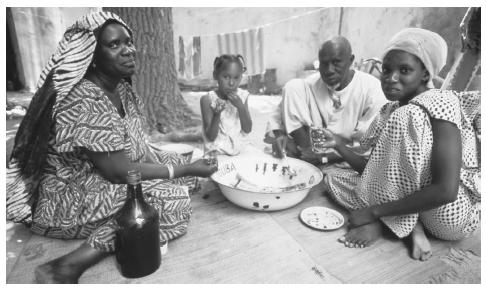
Kin Groups. The traditional social structure based on kinship and rigid stratification remains important but is being modified by the spread of education, the market economy, and the movement of people to urban and industrial centers. The presence of kin at life-cycle ceremonials is necessary for the achievement and maintenance of status.
Socialization
Infant Care. People value children greatly. A child is seen as neighborhood property, and so child care responsibilities are shared. Using a Mbotu, a brightly colored rectangular shawl, mothers carry babies closely tied to their backs during their daily occupations. Neighbors and family members take turns helping busy mothers. Abandonment of infants is rare, and the strength of family bonds limits the need for institutional care of orphans.
Child Rearing and Education. By the time a child is five or six years of age, he or she is taught good values and etiquette. A child should greet elders, help parents with household chores, avoid foul language, and listen to the wisdom of elders. In their early years, boys and girls play together. As they grow older, gender roles become more sharply defined, with the girls remaining more with their mothers to learn household chores. In almost all ethnic groups, boys are circumcised as part of the process of reaching maturity, but the practice of female genital mutilation has been made a criminal offense. Muslim children attend Koranic school until they are six or seven at which time they start a formal education. Corporal punishment in schools has become unacceptable to parents, particularly in urban areas. Formal education is free. The school system has primary, secondary, and advanced levels. Education is available to both sexes. There are many private schools, run primarily by Catholic religious orders.
Higher Education. Universities include the University of Dakar and the University of Saint-Louis. There are also several vocational institutes. As a result of student unrest and deteriorating conditions at the universities, the elite often sends its children to study abroad.
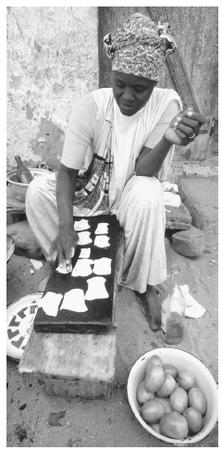
Etiquette
The day starts with greetings. Young men often shake hands, and young women curtsy and often bend down slightly on one knee to greet their elders. Foul language is not tolerated in public, and people usually resort to communication or "dialogue" to diffuse hostility and aggressiveness. People employ Kal, an institutionalized joking relationship that permits individuals within extended families, caste groups, and ethnic groups to exchange blunt comments when they meet even if they do not know one another. Comments frequently focus on eating habits, cleanliness, and intelligence. A person's social rating often is linked to how well he or she respects community values such as Jom (dignity or self-respect) and Ham-sa-bop (self-knowledge).
Religion
Religious Beliefs. Ninety percent of the people identify themselves as Muslims and are affiliated with one of the three principal brotherhoods: the Mourides, the Tijaniyya, or the Qadiriyya. Each brotherhood is distinguished by slight differences in rituals and codes of conduct. Each year, wealthy and middle-class people make the pilgrimage to Mecca. Despite the small size of the Catholic community (approximately 5 percent of the population), Senegal has produced one of black Africa's few cardinals.
Aspects of traditional religion are fused with Islam or Christianity. Many urbanized people still regard their ancestors as important spiritual leaders of everyday life, although Allah or God is worshiped formally.
Religious Practitioners. Many Senegalese believe that living people and spirits may control supernatural forces, and malevolent men often are feared more deeply than are evil spirits. The Wolof seek help from a Jabaran-kat ("healer"), who asks them to sacrifice a chicken to ward off the evil powers of a doma ("witch").
Death and the Afterlife. Death is considered a path by which one joins one's ancestors. When a person dies, loud mourning echoes from the house of the bereaved. Others sing and dance to celebrate the dead person and to send his or her spirit to heaven. The cult of the ancestors is practiced among many of the ethnic groups. Among the rural Wolof, household water jars are seldom cleaned because the spirit of an ancestor could come to drink at that moment and find no water.
Medicine and Health Care
As a tropical country and a poor nation, Senegal is challenged by numerous health problems, including parasitic, intestinal, venereal, and respiratory diseases. Poor sanitation is the main environmental factor that affects the level of health. Malaria is endemic and is a cause of premature death. Intestinal parasites are common because of polluted water. Gonorrhea is present in urban centers. AIDS is a major concern for the population and the health services. Other diseases include hepatitis, trachoma, and tuberculosis. The quality of medical care has deteriorated because of the decline in the number of hospital beds and medical personnel, the lack of medicines in public health facilities, and the appalling conditions of public hospitals.
Secular Celebrations
The major state holidays are New Year's Day (1 January), Independence Day (4 April), International Workers' Day (1 May). During the holidays, people cook ceremonial food and dress up in bright traditional outfits. Religious holidays include Christmas (25 December), and Good Friday, Easter Monday, Eid-al-Fitr, Eid-al-Adha, the Islamic New Year, and Muhammad's birthday.
Arts and Humanities
Support for the Arts. Artists are self-supporting and are forced to seek markets outside the country.
Literature. There is a strong tradition of oral literature that reflects the country's history, philosophy, morality, and culture. Since the 1930s, writers have produced novels, short stories, tales, and essays dealing almost exclusively with African themes. The country also has produced successful filmmakers.
Graphic Arts. Glass painting, a new popular art, depicts religious and historical scenes and personalities. Goldsmiths, weavers, and tailors produce jewelry, carpers, and clothing.
Performance Arts. The performance of traditional dances is a popular form of recreation, and children learn to dance at a very young age. Popular sports include soccer and a form of wrestling called Lamb (the Wolof word for "fight").
The State of the Physical and Social Sciences
Despite the solid reputation of the University of Dakar, which was built in the mid-1900s, the development of the physical and social sciences remains limited primarily because of a lack of funding. However, attempts has been made to develop methods of utilizing solar energy.
Bibliography
American University. Area Handbook for Senegal, 1963.
Clark, Andrew F., and Lucie Colvin Phillips. Historical Dictionary of Senegal, 2nd ed. 1994.
Dilley, R. M., and J. S. Eades. Senegal, 1994.
Gellar, Sheldon. Senegal: An African Nation between Islam and the West, 1995.
Hudgens, Jim, and Richard Trillo. West Africa, 1995.
Sallah, Tijan M. Wolof, 1996.
U. S. Department of State, Senegal, 1999.
—M ADJIGUENE D IAJAYETTE
An interesting and thorough *article*
I also didn't see anything about the traditional religions like Animism, etc. There are also many Catholic and Protestant people around the bigger cities like Dakar.
shafqat hussain
Beth
But seen from an inside perspective, a lot more to say about what is happening culturally, socially, even religiously in my country. I feel like this article is tourist-oriented? Which I can totally understand.
Thanks though for the promotion.
Cheers !!!
Yasa is my favorite food
I'm currently writing an article for a school project. (Travel Writing in Africa) We had to choose a African country that we haven't had the chance to visit. Writing about something or somewhere, when you haven't been there is extremely difficult...However this has helped me so much. In the process, I have a better understanding of Senegal.
Thank you
-Dann
Thanks to who ever made this i found it extremely well done and useful.
Dakar precisely. Am so impressed